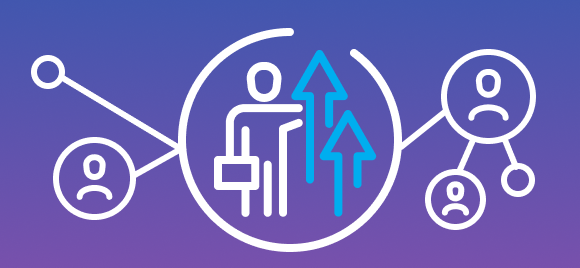Gone are the days when contingent workers acted as an extension of a company’s core, full-time workforce. Contingent workers are increasingly filling some of the most challenging gaps impacting today’s businesses – demand for niche skills, navigating talent shortages, quick turnaround times, and optimizing processes – to name a few. As work and workforces have evolved, so has the significance of contingent workers, to the point where they constitute nearly half of the average workforce today.
Like that of any employee, the wellbeing of contingent workers is just as essential as supporting their professional development. It starts with valuing them for their individual identity, enabling them to bring the strengths from their personal background, and creating a safe space to be their best selves at work. In other words, helping contingent workers shine by prioritizing diversity, equity, and inclusion (DEI).
The current state of DEI in the workplace
Discussion and action around workplace DEI movements were initiated in the 1960s, but the spotlight on DEI has intensified in the past decade. Between acts of violence against minorities in 2020 and 2021, questions raised by employee rights advocates, and organizations amping up talent retention efforts, 60% of companies adopted a DEI strategy in 2022, according to research from DEI proponent Paradigm.
As DEI initiatives are becoming more prevalent in corporate programs for permanent employees, efforts in contingent workforce programs are picking up steam, too. The Future of Diversity, Equity, & Inclusion in the Contingent Workforce 2022 report from Consciously Unbiased and HireTalent in partnership with Staffing Industry Analysts (SIA) found that 40% of workforce professionals think their company’s contingent DEI program is competent. But the report also revealed that collecting actionable data from suppliers about candidates is the biggest barrier that hiring and procurement teams face. Companies can’t effectively tackle the disparity between strategy and execution without the right tools and the ability to capture relevant information to make their program diverse and inclusive. Overcoming this won’t happen overnight – but where there’s a will, there’s a way.
Four steps to incorporate DEI in your contingent workforce program
Get introspective
It’s hard to cater to your workforce if you don’t know who you’re catering to. Identify the similarities and differences between workers; too much of either can be the reason why DEI efforts fail. It’s also important to recognize that intentional and unintentional biases can influence the kind of people your company attracts. Work your way backwards to diversify the staffing suppliers and agencies you partner with, who are often the primary decision makers about the types of talent you hire. In doing so, you can ensure that your contingent program takes a comprehensive DEI approach towards all stakeholders.
Make it omnipresent
Ownership and accountability are keys to the success of business objectives, and for achieving DEI goals, it is no different. The C-suite sets the tone for company culture and conduct, but beyond that, it must be carried forward by managers and subordinates, right down to individual workers. Businesses should set up dedicated leaders who have the ability to maintain organizational commitments to DEI. They can keep the momentum going to make it a part of everyone’s day-to-day experience.
Encourage transparency
DEI is a work in progress, which is why it’s crucial to be open about the wins and losses at every stage. Communication allows the workers who are ultimately affected by the DEI initiatives to be tuned into what’s going on, gain a deeper sense of purpose and belonging, and share their feedback. It helps you understand what you’re nailing and what can be improved upon; it also allows you to gather insights to share with your network of people and companies in the same boat.
Train and learn
Just like any other workplace practice or skill, DEI requires training, so workers can learn about: the most common challenges they and their peers experience; why they happen; and how to conquer them. Providing your workforce with appropriate resources to educate themselves can broaden their understanding of the consequences of microaggressions and disruptive workplace environments, as well as the best ways to address such issues and prevent them from continuing.
Achieve your DEI goals with Prosperix
Every contingent workforce program is a combination of the right strategy and technology. As you forge ahead with creating a more diverse and inclusive program, you need a vendor management system (VMS) that can provide a positive experience for candidates; deliver data and analytics that can be used to amplify your DEI efforts; and position you as a DEI leader.
Prosperix can help. As a minority-owned business certified by the National Minority Supplier Development Council, we are passionate about empowering businesses, suppliers, and candidates so they all prosper. Our VMS network is the only platform in the industry with a built-in hiring marketplace, which gives you access to real-time data on suppliers through comprehensive scorecard metrics and the ability to increase your available diversity spend credits. We are also expanding our applicant-tracking abilities to capture candidate data throughout the hiring process, which translates into better visibility and insight on workers once they are hired.
Ready to make DEI a pillar of your contingent workforce program? Let’s talk.

